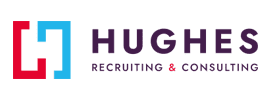A recent study showed that 60 percent of 143 organizations have a formal diversity, equity, and inclusion (DEI) strategy.¹ Although this indicates that DEI initiatives are being implemented within different industries, many companies only use DEI in their recruiting or day-to-day operations. Most fail to see its necessity when it comes to onboarding.
What is the value of DEI when welcoming new hires? This article expounds on how building inclusive teams can be accomplished by onboarding with DEI-focused strategies.
Value of an Inclusive Team
When building your workforce, creating an inclusive team that can work well together is essential. Inclusivity and diversity are more than just buzzwords—they are essential elements of a thriving, high-performing workforce.
Industrial leaders are often concerned with efficiency, safety, and retention. With inclusive leaders and employees, you’re more likely to witness the following advantages:
1. Enhanced Innovation and Problem-Solving
When you cultivate a genuinely diverse and inclusive team, you unlock a powerful engine of innovation that goes far beyond traditional thinking. Diverse teams bring together individuals with different backgrounds, experiences, and perspectives.
This creates a rich intellectual ecosystem that can generate unique problem-solving approaches specific to your operations. An inclusive team can also make it easier to adapt to industry advancements since you have a workforce with varying skills, insights, and expertise. This can even lead to fewer accidents in the areas of manufacturing, logistics, and construction.
2. Improved Retention Rates
Inclusive workplace cultures directly translate to higher employee retention. When employees feel genuinely welcomed and valued for their unique contributions, they develop a deeper commitment to the organization.
Moreover, professionals who feel included are more likely to invest their long-term career aspirations within the company. This ultimately reduces hiring costs and turnover rates.
3. Boosted Team Performance
An inclusive team operates with a synergy that significantly outperforms traditional work groups. When team members feel psychologically safe and respected, they communicate more openly. They share their insights without the fear of being ridiculed or dismissed.
This leads to effective collaboration and more innovative ideas. Workers who are more comfortable speaking out are also more likely to freely note points of improvement they may observe during their day-to-day tasks. In short, there is better teamwork on the production floor.
How does DEI affect onboarding?
DEI has the power to transform the onboarding experience from a transactional process to a holistic journey. It can be the key to creating a strong foundation for long-term employee engagement and organizational success.
When implemented thoughtfully, DEI principles create an environment where new hires immediately feel seen, understood, and valued. Beyond their professional capabilities, DEI strategies can help acknowledge each individual’s differences, cultural backgrounds, and unique perspectives. This helps team members focus more on acclimating to their new work environment rather than holding back due to the fear of being reprimanded.
High turnover is a common challenge in the industrial sector, along with working in shifts. Making onboarding inclusive and diverse becomes particularly important to increase employee engagement and retention from day one.
6 Inclusive Onboarding Strategies
A truly inclusive onboarding approach recognizes that every new hire has a complex identity shaped by personal experiences. The goal is to integrate them into their teams with a sense of freedom to be who they are. This encourages them to contribute their unique ideas and perspectives.
How exactly can this be done? You can adopt the following specific inclusive onboarding strategies into your recruitment cycle.
1. Educate and train onboarding teams
Employers must prioritize comprehensive DEI training for all team members involved in the onboarding process. This ensures everyone understands the importance of creating an inclusive-first experience for new hires.
This training should go beyond surface-level diversity awareness. Dive deep by covering topics such as:
- Unconscious bias recognition
- Cultural competence
- Practical ways to create positive interactions
Emphasize how these workshops should be mandatory for your onboarding team.
Do your best to include interactive scenarios and self-reflection exercises that can help your professionals recognize and mitigate their own biases. Since this approach requires a commitment to continuous learning, you should also consider planning regular refresher courses within one fiscal year.
2. Develop inclusive resources and materials
Creating inclusive onboarding resources means developing materials that speak to and represent a diverse workforce. This strategy requires employers to audit existing documentation and processes.
Put effort into:
- Removing gendered language
- Providing multilingual resources
- Ensuring diverse visual representations
- Incorporating inclusive safety training
- Establishing buddy systems
Although these may seem like minimal details to some, they can actually reflect your organization’s commitment to DEI.
Materials should be designed with accessibility in mind. Provide options for different learning styles. Make resources easily accessible across various devices, including laptops, tablets, and mobile phones.
If possible, actively involve employees from different backgrounds in your content creation process. Seek feedback and perspectives to ensure the materials truly resonate with diverse employees and can support new industrial workers from all backgrounds.
3. Emphasize DEI policies and initiatives
Aside from onboarding teams using inclusive resources, it’s vital to emphasize the role of DEI within your organization. Communicate your commitment to diversity by educating new hires about the DEI policies your organization has in place. This requires a comprehensive orientation that explicitly discusses your business’ DEI goals.
Moreover, make sure that diversity, equity, and inclusion are visible and consistent. Be transparent by sharing diversity metrics and discussing ongoing initiatives with everyone in the organization. Remember that the key to inclusive teams is cultivating an inclusive work environment through the right policies and initiatives.
4. Assign diverse mentorship programs
Mentorship programs can be transformative when designed with intentionality. Driven by a commitment to diversity and inclusion, company leaders should carefully design matching processes that go beyond surface-level demographics.
Consider shared experiences, career aspirations, and potential for meaningful connections when partnering new hires with your tenured professionals. Think of mentorship programs as a tool to provide structured support. It’s best to create space for genuine relationship-building while still ensuring your new hires can acquire the knowledge they need to accomplish their industrial responsibilities.
The most effective mentorship approaches pair new hires with mentors who can teach more than processes and operations. They should be able to offer both professional guidance and cultural navigation. This ensures new employees understand the technical aspects of their role and the unwritten cultural norms of your organization.
Read more: Enhance Employee Potential Through Targeted Coaching
5. Establish employee resource groups
Employee Resource Groups (ERGs) serve as critical support networks that help new hires find community, connection, and advocacy within the organization. Employers should provide formal support for these groups, including dedicated resources, leadership recognition, and opportunities for meaningful organizational input.
Remember that these groups should be voluntary and employee-led. They’re meant to create safe spaces for networking and development between professionals with similar backgrounds. It can also be a venue to discuss and address different groups’ unique challenges.
Successful implementation involves giving ERGs real influence in organizational decision-making. If possible, funding for their initiatives should be provided and integrated into the broader onboarding decisions.
6. Prepare accessibility accommodations
Creating inclusive environments requires proactively addressing potential accessibility barriers before new hires begin their roles. This strategy demands a comprehensive approach that goes beyond physical accommodations. For this strategy to succeed, you must consider technological, communication, and systemic barriers.
As an employer, conduct thorough accessibility audits. Develop flexible accommodation processes and create a culture that views accessibility as a standard practice rather than an exceptional request. In the industrial sector, this may include modifying control panels or workbenches to be adjustable for employees with mobility impairments. It can also be done by investing in assistive technology or ergonomic tools that can be helpful to employees that need them.
With Hughes, fill your workforce with top talent.
Hughes Recruiting & Consulting is a staffing company equipped with a wide network of professionals with diverse skill sets. We offer staffing solutions that cater to your company’s unique needs, filling diverse roles in manufacturing, logistics, and skilled trades.
We can also help you meet compliance requirements and offer guidance on employee relations and performance management. With us as your partner, embracing diversity becomes easy. Build inclusive teams that contribute to your business’ success. Contact us today to learn more!
Reference
- Emerson, Joelle. “Continuing the Work of DEI, No Matter What Your Company Calls It.” Harvard Business Review, 13 Dec. 2024, hbr.org/2024/12/continuing-the-work-of-dei-no-matter-what-your-company-calls-it.

























